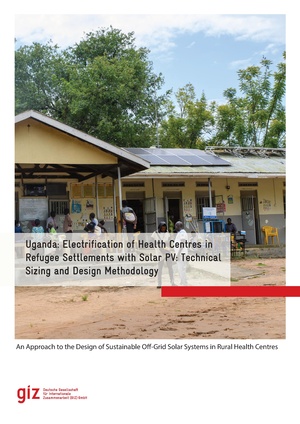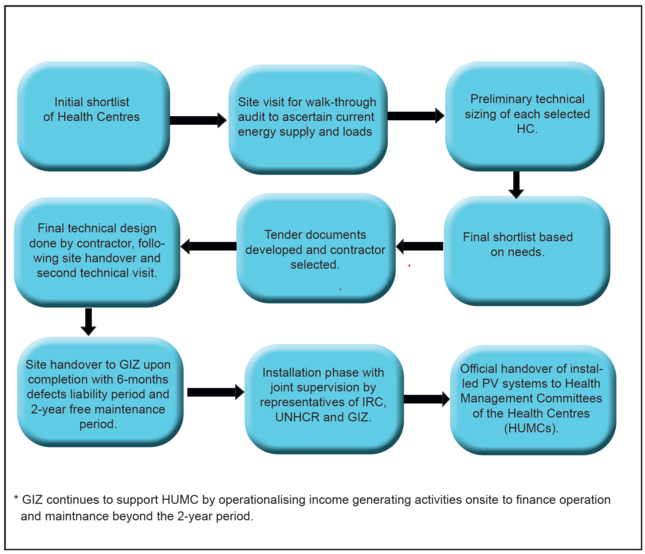Knowledge fuels change - Support energypedia!
For over 10 years, energypedia has been connecting energy experts around the world — helping them share knowledge, learn from each other, and accelerate the global energy transition.
Today, we ask for your support to keep this platform free and accessible to all.
Even a small contribution makes a big difference! If just 10–20% of our 60,000+ monthly visitors donated the equivalent of a cup of coffee — €5 — Energypedia would be fully funded for a whole year.
Is the knowledge you’ve gained through Energypedia this year worth €5 or more?
Your donation keeps the platform running, helps us create new knowledge products, and contributes directly to achieving SDG 7.
Thank you for your support, your donation, big or small, truly matters!
Electrification of Health Centres in Refugee Settlements with Solar PV
Technical Sizing and Design Methodology
Access to and use of energy is essential in humanitarian response, and for longer term sustainable development. The lack of sufficient quality energy products and services, therefore, grossly limits peoples’ opportunities to meet basic needs and strive for self reliance. Shortfalls put people at risk, for instance, in the areas of basic health care, education, and jobs and livelihoods including income generation activities. While several Health Centres (HCs) in the refugee hosting districts of Uganda have been equipped with solar Photovoltaic (PV) systems with funding from Non-Governmental Organisations (NGOs), UN agencies, and the Government, a number of these systems often fail soon after commissioning. This failure can be attributed to several reasons, including poor sizing, poor quality of equipment, as well as a lack of Operations and Maintenance (O&M). Given this background, the GIZ projects Energy Solutions for Displacement Settings (ESDS) and Energising Development (EnDev) sought to address some of the above challenges by providing and installing well designed solar PV systems for six purposely selected HCs located within Rhino Camp and Imvepi Refugee Settlements in Terego and Madi Okollo districts in 2021.
This document outlines the strategy and sizing process utilized by GIZ engineers prior to initiating the procurement process for the solar PV systems.





















